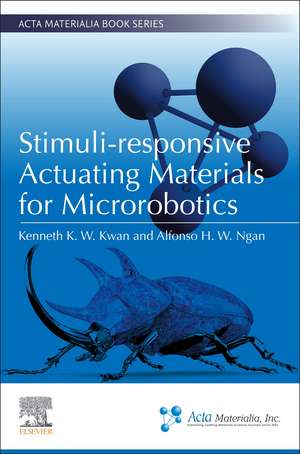Stimuli-responsive Actuating Materials for Micro-robotics: Acta Materialia Book Series
Autor Kenneth K. W. Kwan, Alfonso H. W. Nganen Limba Engleză Paperback – 22 feb 2024
- Examines high-performance stimuli-responsive actuating materials for micro-robotics applications
- Discusses common enabling technologies and micro-robotics device construction, with a focus on integration of materials
- Reviews the application prospects of material-driven micro-robots in micro-surgery and compact engineering
Preț: 956.34 lei
Preț vechi: 1254.75 lei
-24% Nou
Puncte Express: 1435
Preț estimativ în valută:
182.100€ • 191.55$ • 152.31£
182.100€ • 191.55$ • 152.31£
Carte tipărită la comandă
Livrare economică 24 martie-07 aprilie
Livrare express 21-27 februarie pentru 104.86 lei
Preluare comenzi: 021 569.72.76
Specificații
ISBN-13: 9780443160943
ISBN-10: 0443160945
Pagini: 302
Dimensiuni: 152 x 229 x 17 mm
Greutate: 0.5 kg
Editura: ELSEVIER SCIENCE
Seria Acta Materialia Book Series
ISBN-10: 0443160945
Pagini: 302
Dimensiuni: 152 x 229 x 17 mm
Greutate: 0.5 kg
Editura: ELSEVIER SCIENCE
Seria Acta Materialia Book Series
Cuprins
- Introduction to stimuli-responsive actuating materials and micro-robotics
- Metal type actuating materials
- Polymer type actuators
- Carbon-based actuating materials
- New actuating material types
- Multiple-material systems
- Additional robotic functions beyond actuation
- Enabling methodologies
- Robotic applications
- Conclusions


